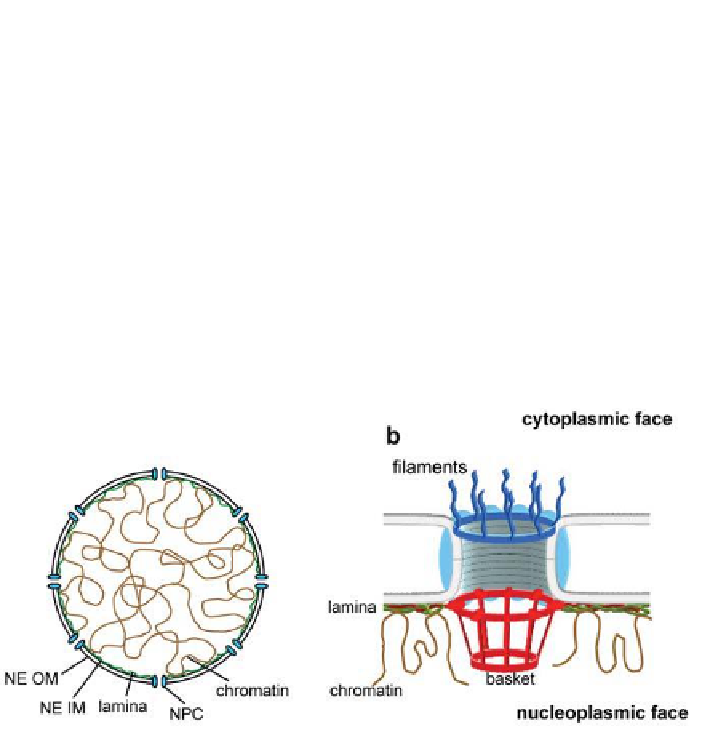Biology Reference
In-Depth Information
6.3.3
The Nuclear Envelope Is a Key Target of Apoptosis
Cell destruction during apoptosis proceeds in a strategic manner. Thereby,
critical cellular components, including the cell nucleus, are sequentially
targeted and dismantled. Nuclear dismantling, in turn, requires key changes
in structure and mechanics of the nuclear envelope, which separates the
cytosol from the nucleus (
Fig. 6.15a
)
. The nuclear envelope shields the nuclear
DNA, mediates the pivotal nucleocytoplasmic exchange of material through
nuclear pore complexes (NPCs) (
Fig. 6.15b
)
, is involved in regulation of gene
expression
40
and confers essential structural stability to the cell nucleus
through the underlying nuclear lamina
(
Fig. 6.15a
)
. The nuclear envelope is
therefore one of the major cellular targets of apoptosis.
(b)
(a)
Figure 6.15.
The nuclear envelope. (a) and (b) are schematics of the cell nucleus and
the nuclear pore complex (NPC), respectively. NE IM and NE OM stand for nuclear
envelope inner and outer membranes, respectively.
6.3.4
AFM Unravels the Fate of the Nuclear Envelope During
Apoptosis
Nanoscale investigation of structure and mechanics of the nuclear envelope
in the normal state but also during apoptosis has remained an unfulilled
wish because of the lack of an appropriate approach. The development of
AFM,
41
a powerful emerging approach capable of simultaneous structural
and mechanical investigations at the nanoscale and in luid, has made this
wish come true.
42
Using AFM structural and mechanical properties of the
nuclear envelope can be investigated under various physiological conditions
including apoptosis.
42-44
















Search WWH ::

Custom Search